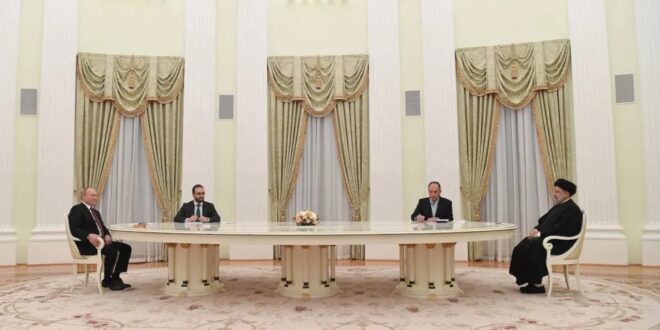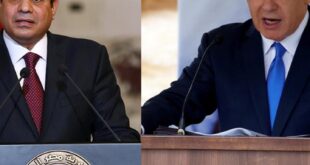In January 2022, Iranian President Ebrahim Raisi arrived in Moscow to discuss monetary and banking issues between Russia and Iran, and the two sides agreed to the removal of trade barriers to increase trade between one another to $10 billion per year (Middle East Monitor, April 2). During his time in Russia, Raisi said that Moscow and Tehran discussed measures on challenging the dominance of the US dollar and continuing trade between Russia and Iran in their respective national currencies (Tasnim News Agency, January, 21). A month after the meeting, extensive Western sanctions were imposed on Moscow in response to Russia’s military invasion of Ukraine on February 24. While Iran had previously been one of the most sanctioned countries in the world, the invasion of Ukraine catapulted Russia into this position as well.
Meanwhile, negotiations to revive the Iran nuclear agreement and return the United States to the Joint Comprehensive Plan of Action (JCPOA) did not reach a clear conclusion. As a result, Iran and Russia have now grown increasingly closer and cooperation between the two countries has entered a new phase in various sectors, including the monetary and banking fields. In this regard, Ali Salehabadi, governor of the Central Bank of Iran, after detailed negotiations with the governor of the Central Bank of Russia, Alexander Novak, in Moscow on July 9, mentioned that the “issue of using national currencies was one of the important focuses of consultation with senior Russian economic officials, and we will soon see implementation of reached agreements” (IBENA, July 9).
When Russian President Vladimir Putin visited Tehran in July 2022, the Kremlin leader’s first trip outside the former Soviet Union since Moscow’s invasion of Ukraine, Supreme Leader Ayatollah Ali Khamenei emphasized that “the US dollar should be gradually taken off global trade, and this can be done gradually” (Gulf Times, July 20). On the same day, in a symbolic act, trading occurred between the Russian ruble and Iranian rial on the Iran Currency Exchange, with the first trade occurring on July 19 with a 3 million ruble ($48,000) exchange (Islamic Republic News Agency, July 19).
At this time, solving the problem of SWIFT (Society for Worldwide Interbank Financial Telecommunication) banking became critical for Russia and Iran, as both countries have found their access to the SWIFT system severely limited. In Tehran’s case, Iran found itself cut off from SWIFT after the Trump administration unilaterally withdrew the US from the JCPOA in May 2018, with the financial messaging service announcing that “it was suspending access for some Iranian banks in the interest of the stability and integrity of the wider global financial system” (Al Jazeera, November 5, 2018). This suspension has continued under the Joe Biden administration, as Washington has failed in reviving the JCPOA. The Kremlin, meanwhile, has now found itself in a similar situation since the start of its war against Ukraine. As the conflict quickly escalated in late February, a large coalition of states, including EU members, the US, Canada and the United Kingdom, among others, agreed to ban several Russian banks from SWIFT with the intent of economically isolating Russia and crippling its financial system (Euronews, August 3).
Under these circumstances, Russia decided to develop a national interbank exchange system, Financial Messaging System of the Bank of Russia (SPFS), which was first implemented in 2014 to replace SWIFT. During this time, Moscow tried to expand the SPFS to the BRICS (loose arrangement of Brazil, Russia, India, China and South Africa), the Eurasian Economic Union (EEU), the Shanghai Cooperation Organization and other important partners for Russia. In this endeavor, Moscow has found a willing partner in Iran, and the two countries have begun working together on developing an alternative payment system to SWIFT (Telesur, 28 July).
Since one of the preconditions of creating a SWIFT-like system between Iran and Russia is the development of native interbank messenger systems, this issue has also been a key part of expert and technical negotiations between the two countries in recent months. In this regard, Iranian Deputy Foreign Minister for Economic Diplomacy Mehdi Safari declared, “Naturally, two countries that want to de-dollarize their transactions should have a special system similar to SWIFT” (Telesur, 28 July).
Another critical step for Iran and Russia in further developing their financial and banking cooperation is the agreement to integrate the Russian Mir payment system and the Iranian Shetab Banking System. Russia designed and created the Mir system in 2014, in addition to creating a financial system independent of SWIFT, as a way to overcome any potential blocking of electronic payments from systems designed by Western countries, such as Visa or MasterCard. Iran, meanwhile, established the Shetab Banking System in 2002 with the intention of creating a uniform backbone for the Iranian banking system to handle ATM, point-of-sale and other card-based transactions. As the countries worked toward integrating their banking systems, Iranian Minister of Economic Affairs and Finance Ehsan Khandouzi announced, “Iran and Russia’s bank card networks will hopefully be connected within the upcoming months” (Tasnim News Agency, October, 11). In addition to the development and facilitation of bilateral banking and financial exchanges between Iran and Russia, Tehran could transfer money with other EEU member states, as the preferential trade agreement Tehran signed with the bloc in 2019 is set to upgrade to a free-trade agreement. This would allow Iran to engage in transactions with Armenia, Belarus, Kazakhstan and Kyrgyzstan, in addition to Russia, as all are connected to Mir (Iran News Daily, September 2).
For this project, Mir Business Bank plays a central role in facilitating exchanges between Iran and Russia. The bank is a Russian entity with 100-percent participation of foreign capital; its founder, and its only shareholder, is Bank Melli (National Bank) Iran. Mir Business Bank has three branches in Moscow, Kazan and Astrakhan. Although the bank was among those financial institutions included on the US Treasury’s sanctions list in November 2018, as a branch of the National Bank of Iran, it already operates outside the SWIFT system (Treasury.gov, November 5, 2018).
In addition, after the SWIFT sanctions against the Russian banking system, Moscow’s banking sector began to cooperate more freely with Mir Business Bank. In general, it seems that Tehran’s and Moscow’s decision to gradually remove the US dollar from banking and commercial transactions and replace it with the ruble and rial is another sign of the growing friendship between the two countries amid the war in Ukraine. Nevertheless, although this cooperation will strengthen ties between Tehran and Moscow at the bilateral level or within the framework of the Eurasian Economic Union, it cannot answer all the financial, banking and commercial challenges stemming from the West’s comprehensive sanctions regimes placed on both countries.
 Eurasia Press & News
Eurasia Press & News




